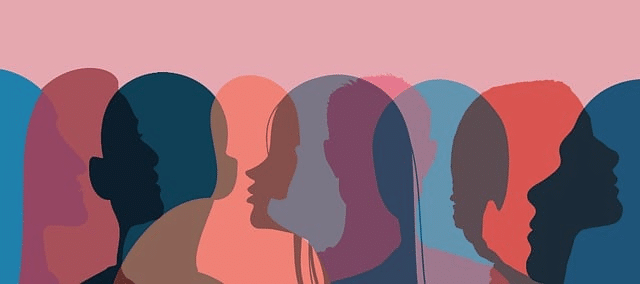Transgender hair transplant surgery is a highly valuable procedure for both men and women who identify as transgender. Hair is an important aspect of one’s appearance and can greatly contribute to self-confidence, especially during the transition process.
For male-to-female (MTF) trans individuals, having a feminine hairline can be crucial in achieving their desired outward expression. This often becomes transgender hair transplant surgeries which involves reshaping the hairline and filling in any areas of thinning or balding.
Follicular Unit Transplants (FUT) and Follicular Unit Extraction (FUE) are popular methods used in MTF hair transplantation. In this blog post, we’ll discuss various hair transplant options that can cater to the specific needs of transgender patients.
Transgender Hair Transplants

Male to Female hair transplant
For male-to-female (MTF) trans individuals, a hair transplant can aid in creating a more feminine appearance. This may involve reshaping the hairline and filling in areas of thinning or balding.
During the procedure, hair follicles are taken from donor sites on the scalp and transplanted to the desired areas. MTF patients may also opt for beard or body hair removal as part of their transition process.
Also, A-Cell and laser hair restoration surgery are popular options for MTF patients looking to improve the health and thickness of their transplanted hair. They can be great additions to hair transplant surgery operations.
However, it’s important to consult with a trusted hair transplant provider who understands the unique needs and desires of transgender patients. A hair clinic that specializes in and is supportive of transgender hair transplant surgery and hair restoration is your best bet.
Female to Male hair transplant
For female-to-male (FTM) trans individuals, a hair transplant can help create a more masculine appearance. This may involve creating a new hairline and filling in areas of thinning or balding to achieve a more defined male pattern. FUT and FUE are popular methods used in FTM transgender hairline transplantation.
In some cases, beard and body hair transplants may be desired to achieve a fuller, thicker beard and chest hair. A-Cell and laser hair restoration can also aid in improving the health and density of transplanted hair for FTM and MTF patients alike.
Types Of Transgender Hair Loss

Transgender individuals may experience hair loss due to a variety of reasons, including hormone therapy, stress, and genetics. For MTF patients, hormone therapy can cause male-pattern baldness, while FTM patients may experience thinning of the hair on the scalp.
Other forms of hair loss among transgender individuals include traction alopecia from wearing wigs or extensions and telogen effluvium caused by drastic changes in hormones during transition.
These types of hair loss can be addressed through various hair transplant methods discussed in this blog post. Consulting with a trusted provider can help determine the underlying causes of hair loss and create a personalized treatment plan for each individual.
Transgender Male Hair Loss

Transgender men may experience hair loss due to various factors, including genetics and hormone therapy during the transition process. This can lead to a receding hairline and thinning of hair on the scalp.
Hair transplants, specifically FUT and FUE methods, can help create a more defined male pattern, fill in areas of thinning or balding, and improve overall density for transgender men. Beard and body hair transplants may also be desired for a full male pattern hair loss and fuller beard and chest hair.
It’s important for transgender men to consult with a knowledgeable provider who understands their unique needs and can create a tailored approach to address their individual concerns. Overall,the value of transgender hair transplantation cannot be understated as it plays a crucial role in helping individuals achieve their desired gender expression.
Transgender Female Hair Loss

Trans women may also experience hair loss due to various factors, including hormone therapy and genetics. Male pattern baldness is still an issue with many trans women as they were born male at birth. This can lead to a more masculine hairline and thinning of hair on the scalp. Male pattern baldness and pattern hair loss must be addressed for many female trans patients.
Hair transplants, such as FUT and FUE methods, can help reshape the hairline and fill in areas of thinning or balding for a more feminine appearance. In addition to the FUE hair transplant itself, procedures like A-Cell and laser hair restoration can aid in improving the health and thickness of transplanted hair for transgender women.
Consulting with an experienced provider is crucial for transgender women to address their unique needs and achieve their desired results through personalized treatment plans.
What’s The Best Method For Transgender Hair Transplant?

There is no one “best” method for transgender hair transplant, as the most suitable approach will vary depending on each individual’s needs and preferences. FUT and FUE are popular methods used for both male-to-female (MTF) hair grafts and female-to-male (FTM) hair transplants. However, other factors such as donor hair availability, scarring concerns, and budget may also play a role in determining the best method.
Ultimately, it is important to consult with an experienced provider who can assess your specific needs and recommend the most suitable approach for you. It may also be beneficial to consider alternative options such hair loss treatments such as beard or body hair transplants or non-surgical treatments like A-Cell or laser therapy to achieve desired results.
What is the difference between masculine and feminine hairlines?

Masculine and feminine hairlines differ in terms of shape, density, and placement. Masculine hairlines tend to have a more pronounced “V” shape with a more defined central peak, while more feminine hairline hairlines are typically rounder or flatter.
Feminine hairlines also tend to have a higher density of hair at the front compared to masculine hairlines, which may appear more receded. Additionally, the placement of the hairline can vary between genders, with male hairlines often starting lower on the forehead than other male and female hairlines do.
Transgender individuals may opt for a different type of hair transplant surgery depending on their desired gender expression and the current state of their natural hairline.
What about recovery after transgender hair transplant?
The recovery process following a full transgender hair transplant surgery can vary depending on the chosen method and individual healing capabilities. However, most patients can expect some degree of swelling and redness in the transplanted area for the first few days after the procedure.
It is important to follow all post-operative care instructions provided by your surgeon, including avoiding strenuous activities and keeping the transplanted area clean and protected. Most individuals are able to resume normal activities within a week or two.
In order to achieve optimal results, it is crucial to follow up with your surgeon for any necessary touch-ups or maintenance treatments. With proper care and monitoring, transgender individuals can achieve natural-looking, long-lasting results from their hair transplant procedure.
What’s the cost for Transgender Hair Restoration, Masculinization, and Femenization?

Transgender hair restoration needs will vary greatly from patient to patient, so, therefore, it is difficult to provide a generalized cost of transgender hair transplants. The cost will be determined during your consultation.
These expenses will have to do with whether you’re looking for head hair or facial hair transplantation. Costs also differ between the FUE method and FUT surgical techniques. Typically, to achieve natural-looking results, you should also keep in mind that you may need more than one transplant in order to restore hair and provide a natural appearance.
Costs can range from anywhere between $4,000 to $15,000 depending on the extent of your hair loss and the number of hair follicles you need to be moved from the donor area to the recipient area. Should you need facial hair transplants or are looking to reshape your hairline, these costs are best discussed with your hair restoration specialist.
Hair Tips for Transgender Hair Restoration Patients

Taking care of your hair is essential for maintaining its health and achieving the desired results from a hair transplant. Here are some tips specifically for transgender individuals:
Communicate openly with your provider about your transition goals and any concerns you may have.
Follow all pre-operative and post-operative instructions provided by your surgeon to ensure proper healing and optimal results.
Consider using non-surgical treatments like A-Cell or laser therapy in combination with a hair transplant for improved outcomes.
Avoid wearing wigs or extensions that can cause traction alopecia, especially during the recovery period after a hair transplant.
Incorporate a healthy diet rich in protein, iron, and vitamins to promote hair growth and overall wellness.
Be gentle when styling and handling your transplanted hair to avoid damaging it.
Be patient and understand that it may take several months to a year for the full results of your hair transplant to show.
By following these tips and working closely with an experienced provider, transgender individuals can achieve their desired hair goals and feel more confident in their appearance.
Hair Transplants and Transgender Patients

Hair transplants can be a life-changing procedure for transgender individuals. After all, hair is an important gender trait and one that many patients use to express themselves. Transgender hair restoration surgery and MTF hair transplant surgery help in achieving the desired gender expression, but they also have a significant impact on self-esteem and confidence.
However, it is important to note that hair transplants may not be suitable for everyone. Factors such as age, overall health, and hormone levels should be taken into consideration before undergoing the procedure.
Communication is Key
In addition, transgender patients should communicate openly with their providers about any concerns or expectations they may have. This will ensure that the treatment plan is tailored specifically to their needs and goals.
Developing a solid surgical plan may include other treatments including hairline lowering, a brow lift, facial feminization, hormonal medications, or even gender reassignment surgery.
Potential plans to include any of these forms of medical intervention or plastic surgery should be discussed during your initial consultation so you achive the best outcome for your situation.
Can Transgender Hair Transplants Fail?
Transgender hair transplant surgery can fail in some cases, especially if not performed correctly or if the patient does not follow proper aftercare instructions.
Choosing a reputable and experienced provider, following all pre-operative and post-operative care instructions, and having realistic expectations can greatly increase the chances of a successful hair transplant.
However, it is important to keep in mind that every individual’s body may react differently to the procedure, and results may vary. This is especially true with individuals who may be on hormone therapy who are looking for hair restoration or hair transplantation operations, as interactions may be possible.
Contact Best Hair Transplant Surgeon for Transgender Hair Transplant

If you are a transgender individual considering a hair transplant, it is crucial to consult with a reputable and experienced provider who understands the unique needs of the transgender hair restoration community.
The Best Hair Transplant team has years of experience working with transgender hair transplant surgery patients and can provide personalized treatment plans to help you achieve your desired results.
Don’t let hair loss affect your transition journey any longer. Contact us today to schedule a consultation and take the first step toward a full head of beautiful hair!
Remember, you deserve to feel confident and happy in your own skin. Let us help you on your path to self-discovery and self-love through our transformative hair transplant procedures. We look forward to helping you achieve your natural hair growth goals!

